A Tale of Four Fighter Jets
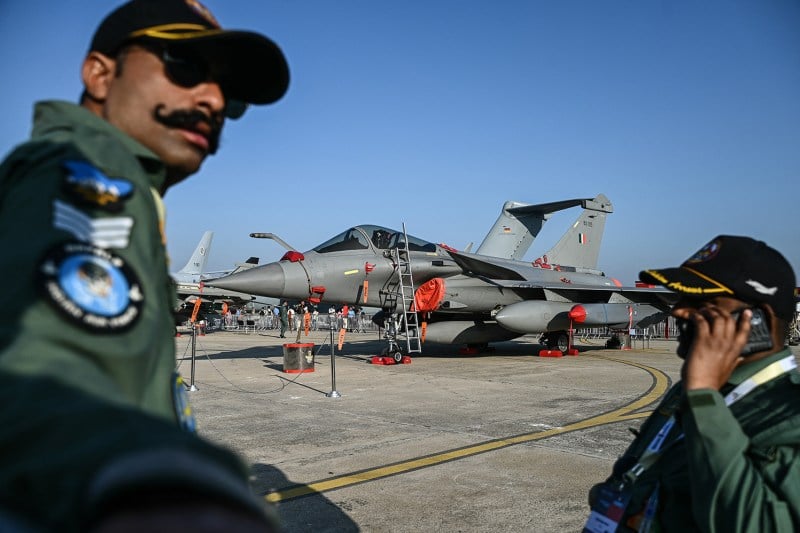
A Tale of Four Fighter Jets
The aircraft India and Pakistan use to strike each other tell a story of key geopolitical shifts.
Indian Air Force personnel stand in front of a Rafale fighter jet during a military aviation exhibition at the Yelahanka Air Force Station in Bengaluru on Feb. 13. Idrees Mohammed/AFP via Getty Images
A terrorist attack takes place in Indian-administered Kashmir. India blames Pakistan and vows to retaliate. A few days later, India conducts airstrikes in Pakistani territory, the two sides exchange fire, and one side claims it shot down the other’s fighter jets.
That could either be describing events that took place in 2019, or events that took place this week.
A terrorist attack takes place in Indian-administered Kashmir. India blames Pakistan and vows to retaliate. A few days later, India conducts airstrikes in Pakistani territory, the two sides exchange fire, and one side claims it shot down the other’s fighter jets.
That could either be describing events that took place in 2019, or events that took place this week.
Back then, New Delhi’s retaliatory airstrike on the Pakistani town of Balakot resulted in the shooting down of one of its jets, a Russian MiG-21 Bison whose pilot was captured and subsequently returned by the Pakistani military. India claimed it had also shot down one of Pakistan’s F-16 jets, but that was never proved and—as Foreign Policy reported at the time—was disputed by the U.S. military that sold those jets to Pakistan and monitored their usage.
On Wednesday, however, it was Pakistan with the unconfirmed claim, alleging that it had shot down five Indian fighter aircraft including a MiG-29 and a Sukhoi SU-30 (both Russian) as well as three of India’s new French-made Rafale jets. India has refuted those claims on social media, though a French intelligence official told CNN that at least one of the Rafales had indeed been shot down. Also notable is what Pakistan’s deputy prime minister and foreign minister, Ishaq Dar, told parliament the country used to shoot down the Indian jets—Chinese-made J-10C fighters.
Through the mirror-image scenarios of attacks, strikes, claims, and counterclaims, the fighter aircraft used by India and Pakistan, respectively, tell a story of immense geopolitical change in the six years between the two conflicts.
India’s air force has historically been heavily dependent on equipment from Russia, a holdover from the Cold War era when New Delhi largely aligned itself with the erstwhile Soviet Union. Russian arms sales accounted for more than half of India’s imports between 2015 and 2019, according to data from the Stockholm International Peace Research Institute (SIPRI), though that was a sharp drop from the 72 percent in the five years prior as India began an effort to diversify its arsenal.
That shift has largely benefited the West, reflected in the most recent SIPRI numbers published last year. France accounted for 33 percent of arms sales to India in the last five years, while Israel made up 13 percent and the United States accounted for 10 percent. Russia’s piece of that pie, meanwhile, dropped to 36 percent (though India’s existing military equipment remains overwhelmingly Russian).
France’s surge up that list is driven by India’s purchase of 36 Rafales, delivered between 2020 and 2022 as part of a deal between the Indian government and the jets’ French manufacturer, Dassault. “Overwhelmingly, the most capable thing in India’s arsenal is the Rafale,” said Richard Aboulafia, managing director of the consultancy AeroDynamic Advisory and an FP contributor. “It was probably the forward edge of the spear” in India’s airstrikes this week, he added. India signed yet another contract with Dassault as recently as last Monday, for the eventual delivery of 26 more Rafales to its navy.
India’s changing arms procurement policy is also reflective of its close relationship with the United States, which has steadily improved since the turn of the millennium and accelerated under Indian Prime Minister Narendra Modi, who came to power in 2014. Modi’s June 2023 visit to Washington during President Joe Biden’s administration yielded a deal with the U.S. firm General Electric to jointly manufacture engines for India’s indigenous “Tejas” fighters, as well as the sale of 31 MQ-9B Guardian drones from San Diego-based General Atomics. U.S. aviation giants Lockheed Martin and Boeing had also aggressively bid for their fighter jets—the F-16 and the F/A-18, respectively—to be inducted into the Indian military nearly a decade ago, as did Swedish manufacturer Saab, but India ended up picking the Rafales instead. “It’s still one of the great hopes,” Aboulafia said. “Ultimately, India has a requirement for several hundred jets.”
Pakistan’s military, like its geopolitics, has gone in the opposite direction. U.S.-made F-16s (among other American materiel) have been a mainstay of the Pakistani air force since the early 1980s, when U.S. President Ronald Reagan approved the initial sale of 40 of the jets to help Pakistan fight the Soviet Union in neighboring Afghanistan. The jets would become an enduring symbol of Pakistan’s air force and a barometer for U.S.-Pakistan relations, with several pauses on sales of the jets—along with broader military aid—in ensuing decades that coincided with breakdowns in the bilateral relationship.
That back-and-forth dynamic continues to this day. U.S. President Donald Trump’s administration greenlit a $397 million package to monitor the usage of Pakistan’s F-16s earlier this year, though Trump had suspended most security aid to Pakistan over concerns about its support for terrorism during his first term in 2018. Biden subsequently approved a $450 million upgrade package for Pakistan’s jets in 2022.
Meanwhile, Pakistan’s increasing proximity to Washington’s foremost adversary, China, is reflected in its arms purchases. According to SIPRI data, China was only the second-largest arms exporter to Pakistan between 2006 and 2010, with 38 percent of sales to the United States’ 39. As of 2024, China accounted for 81 percent of arms sales to Islamabad, and “perhaps always will be” its biggest supplier, Aboulafia said.
China’s fighter jet manufacturing capabilities have progressed significantly in recent years, with its People’s Liberation Army amassing an estimated 195 fifth-generation J-20 aircraft, more commonly known as the Mighty Dragon. The aircraft’s stealth capabilities, along with advanced radar and sensing, have drawn comparisons to advanced U.S. jets such as the F-22 and the F-35.
Pakistan’s J-10s are a generation behind that cutting edge but are nonetheless “probably the most capable thing that Pakistan has,” Aboulafia said, a sentiment he described as less true of the JF-17 jets jointly manufactured with China. The biggest challenge for Pakistan to keep its fleet of planes on pace in the future will be its long-standing economic struggles. “It’s not like Pakistan is going to step up to the plate and spend $10 billion on a package of new combat aircraft,” he added.
But the latest conflagration is likely to spur both countries to double down on military enhancements. “The depressing reality is that this is what both sides have spent the past few decades preparing for,” Aboulafia said. “Even if it stays confined to what just happened, hopefully, it makes them even more likely to increase their purchases.”
Rishi Iyengar is a reporter at Foreign Policy. X: @Iyengarish
More from Foreign Policy
-

Eight people dressed in camouflage military combat uniforms wade across a river, the water up to their waists. The soldiers carry large backpacks along with their rifles. Snowcapped mountains and a thick forest of evergreen trees loom in the distance. Get Ready for the Aleutian Island Crisis
As conflict heats up in the Arctic, foreign adversaries eye Alaskan territory.
-

U.S. President Donald Trump speaks to reporters before boarding Air Force One at Morristown Municipal Airport in Morristown, New Jersey, on April 27. Trump’s First 100 Days Reveal a ‘Strongman’s’ Unprecedented Weakness
No U.S. president has ever surrendered global power so quickly.
-

An elderly man and woman sit on the ground, the man on his knees as he sorts through something on the ground. Behind him are a rusted cart and bicycle in front of a paint-smeared concrete wall and a battered corrugated metal sign with the words USAID: From the American people” on it. What Trump’s New Budget Says About U.S. Foreign Policy
The president wants to significantly pull back on many of America’s traditional global engagements while spending more on the border and defense.
-

U.S. President Donald Trump listens to Secretary of State Marco Rubio at a cabinet meeting in the White House in Washington, D.C. Rubio’s Reorganization Plan Is a Wrecking Ball
The State Department revamp goes far beyond streamlining—it will devalue human rights and strip away critical expertise.

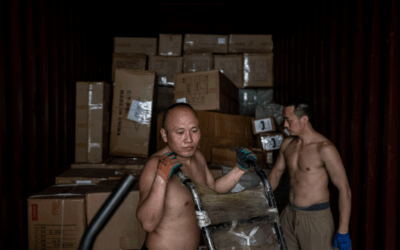





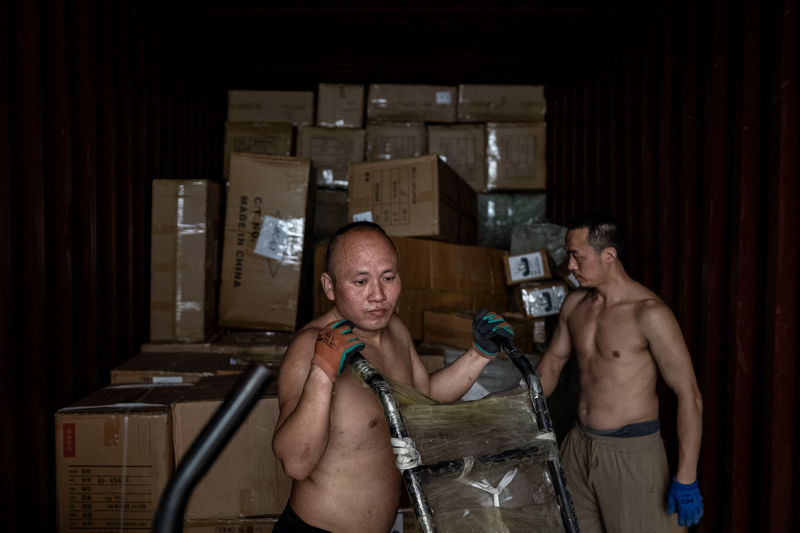
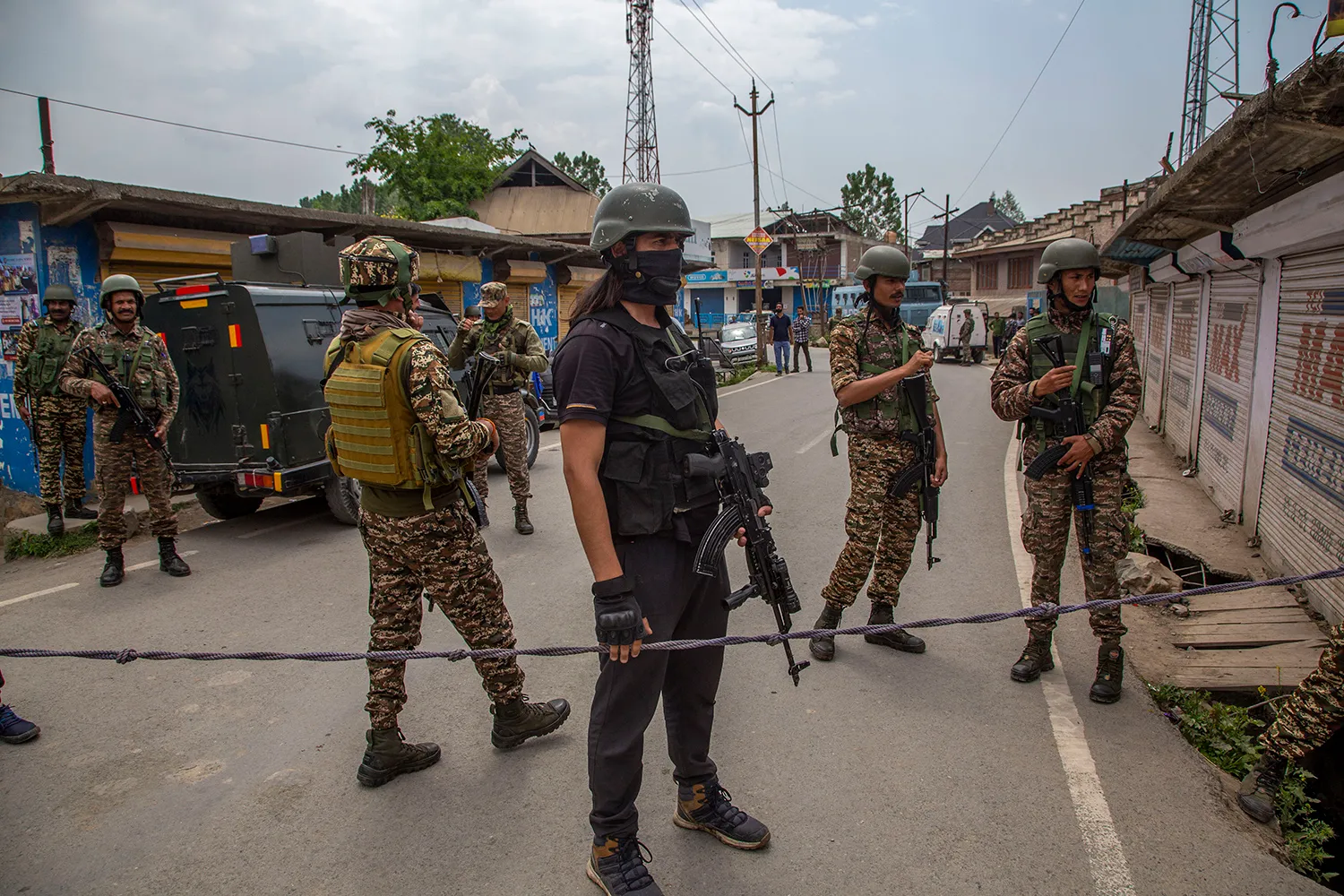
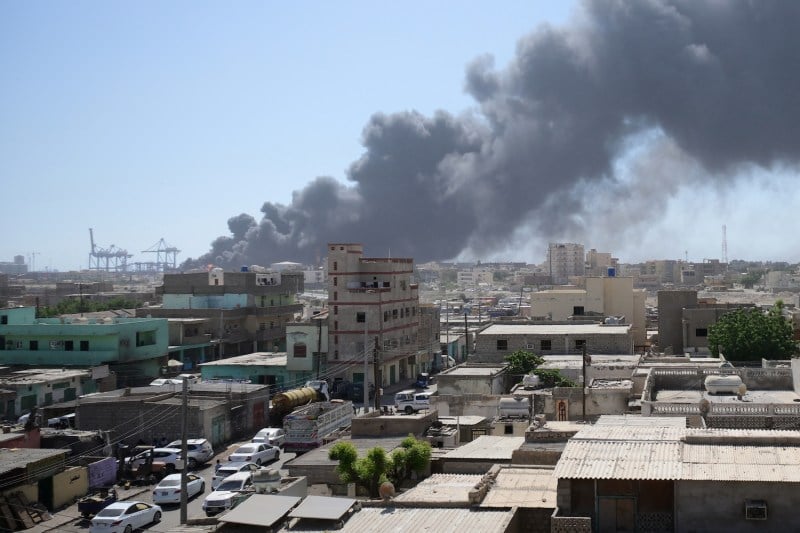

Join the Conversation
Commenting on this and other recent articles is just one benefit of a Foreign Policy subscription.
Already a subscriber?
.
Subscribe
Subscribe
View Comments
Join the Conversation
Join the conversation on this and other recent Foreign Policy articles when you subscribe now.
Subscribe
Subscribe
Not your account?
View Comments
Join the Conversation
Please follow our comment guidelines, stay on topic, and be civil, courteous, and respectful of others’ beliefs.
Change your username |
Log out
Change your username:
CANCEL
Confirm your username to get started.
The default username below has been generated using the first name and last initial on your FP subscriber account. Usernames may be updated at any time and must not contain inappropriate or offensive language.